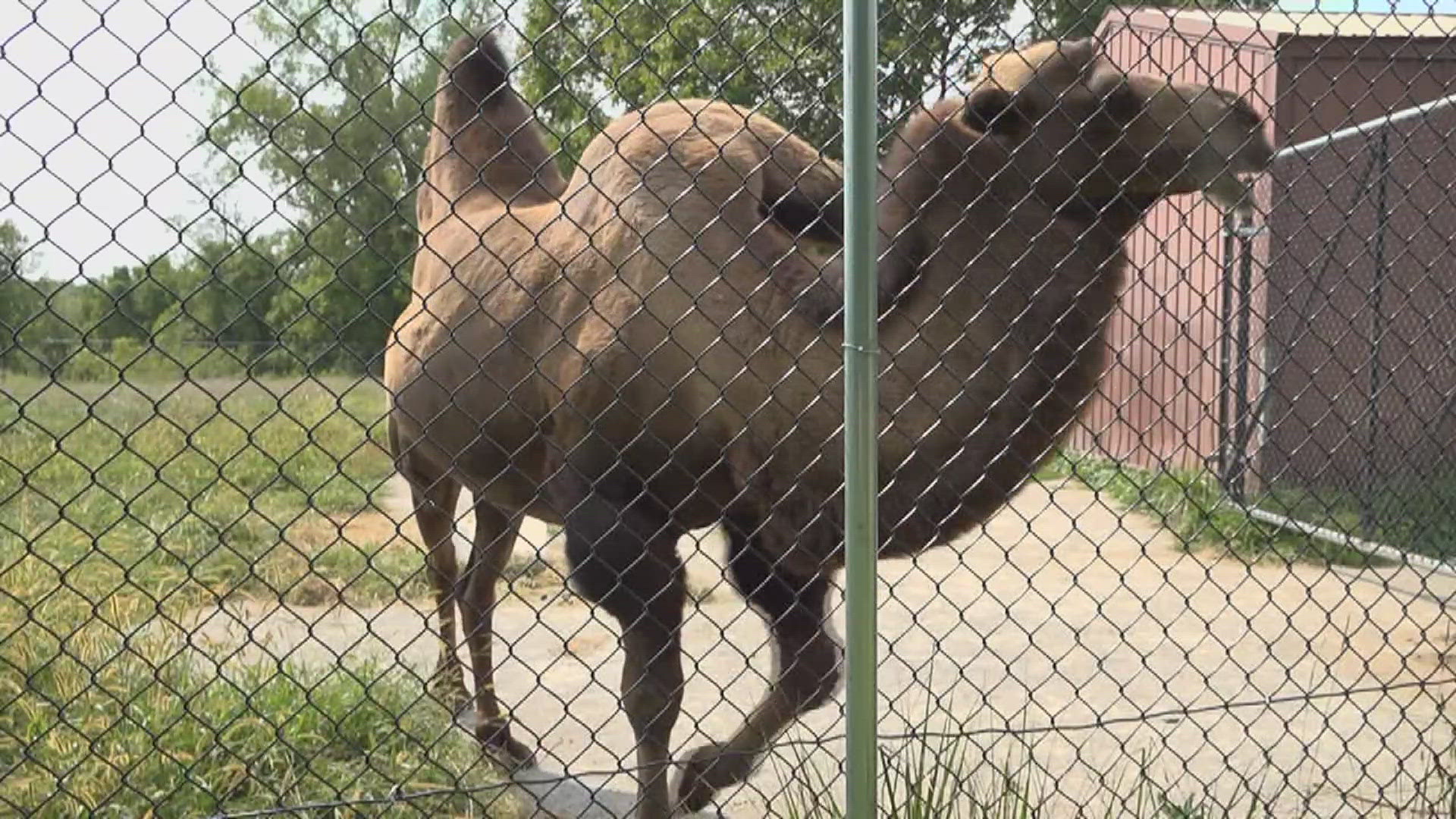COAL VALLEY, Ill. — Editor's note: We incorrectly state in the video that the camel's name is Raj. Its actual name is Taj. The article has been updated to reflect this. We apologize for the mistake.
The Niabi Zoo has had two Bactrian camels since 2017, named Taj and Fergie. The species is critically endangered, with fewer than 1,000 individuals left in their native region of Central Asia.
10-year-old Taj has one hump flopped to the side. A post on Facebook claims this is because he's been without food long enough to deplete the fat stored in the hump.
THE QUESTION
Is this Niabi Zoo camel being underfed?
THE SOURCES
- Lee Jackson, director of the Niabi Zoo
- Dr. Michael Renner, Professor of Environmental Science, Biology and Psychology at Drake University
THE ANSWER
Wild Bactrian camels do use their humps to store energy for when food is scarce. However, camels in zoos are fed every day, so they don't need to build up stores of fat.
WHAT WE FOUND
Jackson said the areas Bactrian camels inhabit in the wild reach extreme temperatures, ranging from -20 degrees in the winter to 100 degrees in the summer.
"They come from some of the harshest environments in the world," Jackson said. "Central Asia, Western China, down through India, very dry, semi-desert and desert areas. So they only get to really fatten up once a year, then the fat they carry in their humps carries them over through the rest of the year."
But that's not the case at Niabi, or any zoo with Bactrian camels.
"We feed them every day, so it’s not as important for them to build up all those fat reserves as they would have to do in the wild to survive."
He said the slumped hump doesn't bother the camel, either.
"It’s just like every other part of his body, sometimes, but yeah it doesn’t affect him at all," Jackson said.
We also talked to Dr. Michael Renner, Professor of Environmental Science and Biology at Drake University. He teaches classes for the university's Zoo and Conservation Science program.
He said it's normal for captive camels to have floppy humps.
"The difference in environmental challenge between a zoo and a desert is huge, and camels evolved in a harsh desert environment where they can often go days between sources of food and water," Brenner wrote in an email. "In a zoo, they have a much easier life (and tend to live much longer), and so don't need the reserves typically stored in a hump."
Taj eats different types of hay, a specially-made commercial herbivore diet and any other grasses he can reach. So does his friend Fergie, but her humps are straight.
"They're like people, we all carry our fat differently," Jackson said. "So she just happens to have smaller humps that stand upright."
Taj's fat stores aren't as full as they could be, but it's not because he's underfed.

